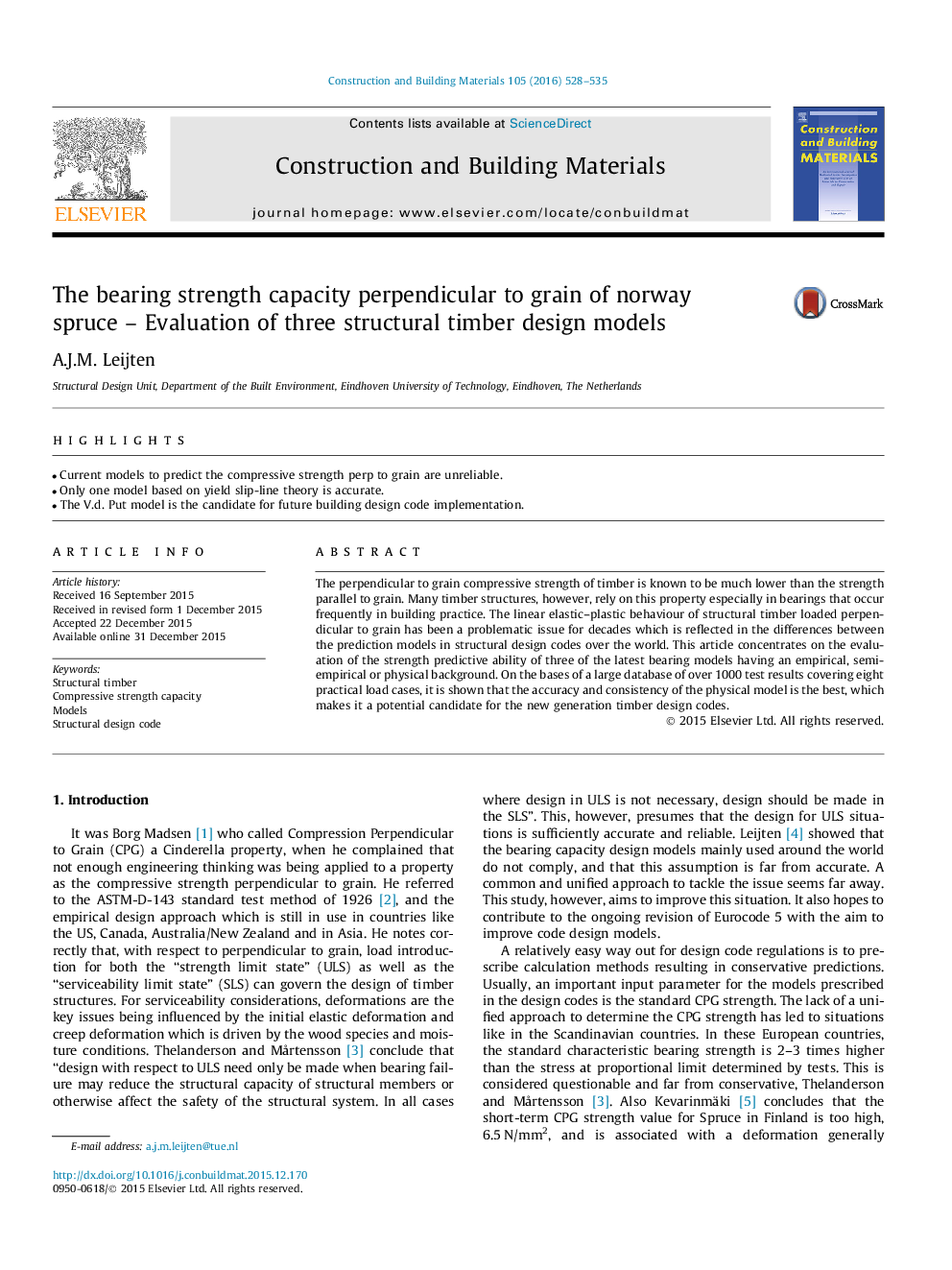| Article ID | Journal | Published Year | Pages | File Type |
|---|---|---|---|---|
| 6719785 | Construction and Building Materials | 2016 | 8 Pages |
Abstract
The perpendicular to grain compressive strength of timber is known to be much lower than the strength parallel to grain. Many timber structures, however, rely on this property especially in bearings that occur frequently in building practice. The linear elastic-plastic behaviour of structural timber loaded perpendicular to grain has been a problematic issue for decades which is reflected in the differences between the prediction models in structural design codes over the world. This article concentrates on the evaluation of the strength predictive ability of three of the latest bearing models having an empirical, semi-empirical or physical background. On the bases of a large database of over 1000 test results covering eight practical load cases, it is shown that the accuracy and consistency of the physical model is the best, which makes it a potential candidate for the new generation timber design codes.
Keywords
Related Topics
Physical Sciences and Engineering
Engineering
Civil and Structural Engineering
Authors
A.J.M. Leijten,
